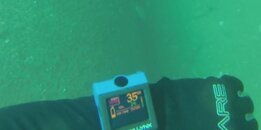R
redacted
Guest
FYI, there are dive computers that allow you to set up to 5 levels of conservatism. The Uwatec ( Scubapro ) dive computers use the ZH-L8 ADT MB algorithm that has a worldwide proven safety record. This enhanced algorithm allows the user to choose which micro-bubble level thus enabling the diver to reduce the risk of the bends.
What dive computers that have been on the market for a few years do not have a "worldwide proven safety record"?
Any data on the amount of risk reduction associated with each optional level?
Do you have any data that suggests any other dive computer used to its limits with maximum conservative factors implemented is any safer than, say, my Oceanic Data + (a recognized liberal computer) when using the beginning of the caution zone on the tissue loading bar graph as the dive limit? (That would equate to approximately an 80% allowable N2 load on the leading compartment.)





